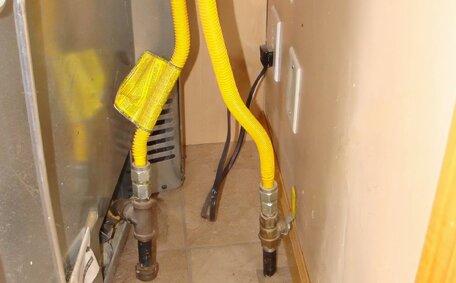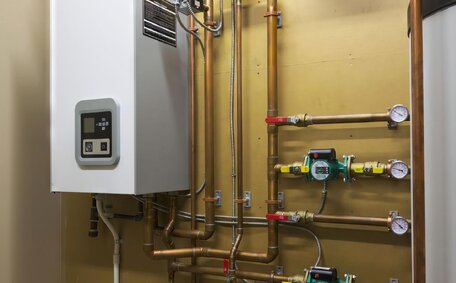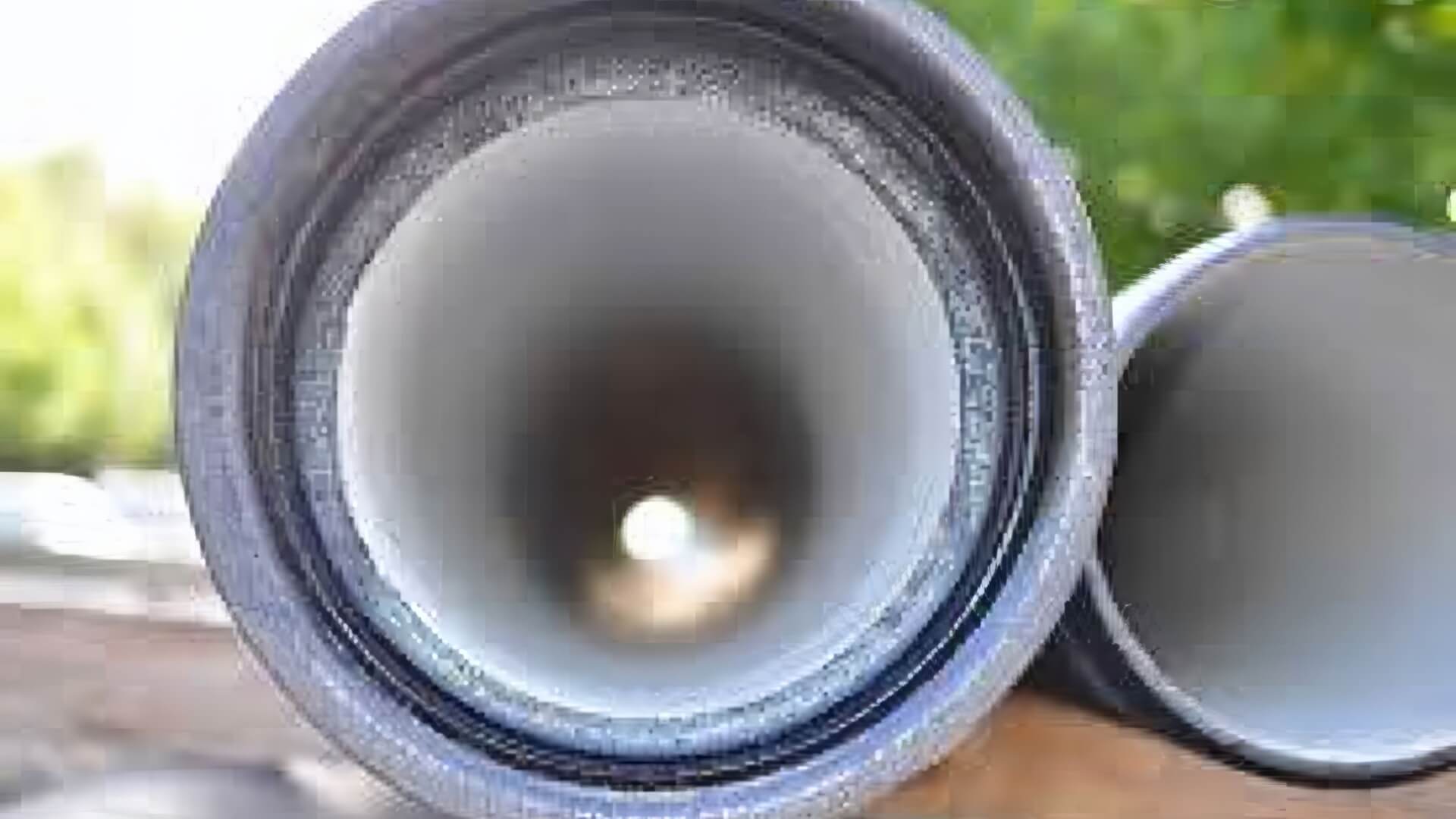
Keep Updated on Gas Appliance Recalls
Consumers should maintain awareness of current gas appliance recalls and safety alerts to prevent injuries. Check recall lists regularly to protect your home and family.
Read MoreThe evolution of drainage systems marks significant advancements from the dawn of civilisation. Basic drainage methods involving channels carved into the ground were used in humanity’s first urban settlements over 5,000 years ago.
Archaeological evidence shows early sewer systems in the ancient Indus Valley civilizations of modern-day Pakistan and northwestern India around 3000-1500 BC. These early drainage systems helped remove wastewater from the first cities, channelling it away from living areas. Despite their simplicity, these systems were foundational for future advancements in drainage technology.
Innovating beyond their predecessors, the ancient Minoans employed terracotta pipes for improved sewage management. The Romans enhanced sanitation by constructing covered sewage channels connected to cesspools, establishing comprehensive drain systems throughout their empire.
Drainage systems underwent continuous improvements during the Greek and Roman periods. The Cloaca Maxima sewer system helped keep the bustling Roman capital healthy.
While most early civilizations focused drainage systems on sanitation, removing waste far from population centres, later periods saw more nuanced stormwater management. The introduction of the French drain, which redirects rainwater runoff, boosted agricultural productivity in Mediaeval Europe. Drainage design evolved to manage sewage, stormwater, and irrigation, all vital for the development of modern urban centres.
Greco-Roman cities saw advancements in water and waste management systems. Elaborate drainage systems, constructed using materials like stone, wood, clay, lead and copper pipes, helped remove wastewater and improve sanitation.
Advancements in Greek water supply infrastructure included complex networks of terracotta and lead pipes, distributing water to public baths, fountains, and latrines. They recognised the importance of efficient drainage and sewage removal for public health in urban areas.
The Romans expanded on Greek ingenuity, implementing expansive drainage networks across their empire. Sewers like the Cloaca Maxima used gravity to direct wastewater into major outfall channels leading outside city walls. Roman building codes mandated drainage for new construction.
Cities such as Rome, with populations exceeding 1 million, required robust sewage system management. Underground conduits were crucial in mitigating disease by flushing waste far from congested streets and residences, greatly benefiting public health through the prevention of infections.
Mediaeval Europe witnessed a slowdown in drainage development following the Roman Empire’s fall. Advancements stagnated as fragmented feudal societies lacked the resources and organisation of past imperial civilisations.
During the Early and High Middle Ages, from 500 to 1300 AD, basic drainage methods continued to be used. Open street gutters remained commonplace, resulting in unsanitary conditions in growing towns and cities. Cesspools were still relied upon; overflow sometimes caused foul smells and disease outbreaks.
Reasons for arrested development include ongoing political instability, lack of unified governance, and population declines following the Roman collapse. The decentralised feudal model also impeded large-scale infrastructure projects spanning multiple fiefdoms.
Though Roman aqueducts deteriorated, monastic orders conserved water engineering knowledge, upholding basic sanitation practices. By the Late Middle Ages, renewed urbanisation saw mediaeval cities like London begin addressing waste issues, restricting dumping waste into waterways.
Still, quality drainage and closed sewer infrastructure remained rare across mediaeval Europe. Epidemics plagued congested urban areas due to ever-present street waste permeating fragile wooden housing. It was not until the early Renaissance period that substantial progress resumed, learning lessons from renowned Roman predecessors.
The 19th century experienced pivotal changes in drainage and plumbing, spurred by the Industrial Revolution and urban expansion.
The widespread availability of cast iron piping led to marked improvements in public health. The transition to durable, smooth, and corrosion-resistant cast iron pipes marked a significant improvement over earlier materials such as lead or carved wooden conduits.
The proliferation of indoor plumbing reduced dependence on outdoor privies and wells. Cities established centralised drinking water while segregating foul and storm sewers.
Thomas Crapper popularised the water closet and siphonic toilet system still used today. In 1882, Crapper’s patented floating ball valve dramatically cut down on water wastage.
As production costs fell, municipal plumbing networks expanded along with advanced sewage treatment technology. Settlement sewerage became increasingly common.
By the late 1800s, drainage infrastructure was unrecognisable from preceding centuries. Effective wastewater removal supported rapid population growth in industrialising urban centres, improving standards of cleanliness and public health.
The late 19th and early 20th centuries saw indoor plumbing become commonplace in businesses and homes across industrialised nations. Indoor plumbing’s rapid adoption transformed sanitation practices, living conditions, and public health.
By the 1920s, more than half of the households in the U.S had complete plumbing facilities such as bathtubs and flush toilets linked to municipal sewer systems. Similar trends occurred in Europe as water mains, sewage pipes and treatment plants expanded rapidly in growing cities.
In the past, densely populated urban areas suffered from outbreaks of infectious diseases like cholera and typhoid due to inadequate sanitation. However, indoor water supply and waste removal greatly mitigated health risks. Mortality rates subsequently dropped alongside a myriad of societal benefits.
This era’s sanitation movement brought plumbed bathrooms and kitchens into everyday life. Gone were the days of outhouses, cesspools and hand-pumped wells. Iceboxes gave way to hot and cold running water. Laundry moved indoors as cleaning clothes and dishes grew far easier.
Widespread indoor plumbing immeasurably increased living standards, public hygiene, women’s emancipation and general quality of life. Its adoption was a crucial development, underpinning population booms seen worldwide throughout the 20th century.
Drainage systems in the 20th century increasingly emphasised efficiency and sustainability alongside functionality. New materials like PVC and polyethylene replaced older metal piping, resisting corrosion while enabling smoother water flow.
Treatment methods advanced dramatically from basic sedimentation tanks to activated sludge processes, trickling filters, and ultimately full secondary treatment removing over 85% of sewage contaminants before waterway discharge.
Automation further improved efficiency, with pumps and controls managing wastewater levels. Modern drainage networks harness gravity alongside precision engineering, using computer modelling to optimise flow rates, pipe gradients and pumping station parameters.
Environmental considerations are now central in sewer system design. Tertiary treatment tackles nutrients like nitrogen and phosphorus to prevent algal blooms in waterways. Some facilities harvest methane from sewage decomposition for energy generation.
Dual wastewater reuse has emerged since the 1990s, with treated greywater from sinks, baths and washing machines recycled for toilet flushing and irrigation. Water sensitive urban design principles also mitigate stormwater impacts through raingardens, wetlands and permeable paving.
Cutting-edge technologies like UV disinfection, membrane bioreactors and enzymatic pre-treatment herald an even more efficient, sustainable future for the vital drainage systems underlying modern society.
As populations grew over time, sewerage systems in the south east required ongoing upgrades to treatment plant capacities and processing methods. Early civilisations disposed wastewater into waterways or soak pits with minimal treatment. However, modern treatment plants employ sophisticated multi-stage processing to service vast south eastern metropolitan centres.
Major cities in the 1800s saw the introduction of sedimentation-based sewage treatment. Primary treatment employed gravity settling tanks to eliminate 50% of the solids present in the incoming wastewater. Secondary treatment came next; biological processes like trickling filters and activated sludge removed most organic matter.
Today, advanced tertiary treatment tackles nitrogen, phosphorus and other nutrients. Almost all solids and over 85% of bacteria are filtered out before responsibly discharging treated effluent. Some modern plants have been designed to generate renewable energy via sewer heat recovery and biofuel conversion.
Processing capacities have skyrocketed in tandem with burgeoning population numbers. Where early systems managed thousands of cubic metres per day, large contemporary plants can treat hundreds of thousands of cubic metres daily. Singapore’s Changi facility serves over 5 million people, processing up to 1.4 million cubic metres of used water daily.
Automation also boosted efficiency enormously. Automation, through optimised pre-treatment and intelligent control systems, reduced the need for manual labour. However, significant operational and maintenance inputs remain to uphold strict environmental discharge standards.
Modern drainage networks have evolved significantly from the combined sewers of the past. Ongoing development of treatment capacities and processing methods helps drive progress towards sustainable urban living.
Regulations and public health concerns have been key drivers spurring ongoing drainage system improvements over time. Mandated policies have led authorities to implement major infrastructure upgrades and processing changes to meet modern sanitary standards.
19th century London suffered repeated cholera outbreaks due to overtaxed cesspits leaching into compromised water supplies. In response to these devastating epidemics, 1847 onwards saw legislative mandates for functioning sewage connections in all new construction. This marked a major turning point in the provision of underground sewage infrastructure.
The 1854 Broad Street cholera outbreak caused over 500 fatalities in central London before John Snow linked the spread to a contaminated well. This tragedy motivated lasting water quality regulation reforms across England.
Presently, effective water management is a cornerstone of public health.
Stringent environmental regulations require advanced treatment standards before wastewater discharge into waterways. Tertiary nutrient removal, UV disinfection and frequent testing help preserve downstream ecosystems and protect consumers. Violations carry heavy fines, with negligence potentially causing major illness outbreaks.
Ongoing policy reform also upholds progress. Recently updated public health acts mandate sustainable water use, enforcing water efficiency and rainwater harvesting standards in new buildings. Such updated codes ensure drainage networks continually improve despite soaring urban densities.
Climate change poses pressing modern challenges for drainage systems worldwide. More extreme weather with intense storms, prolonged droughts and rising sea levels threaten infrastructure integrity and water security.
Increased storm intensity and frequency due to climate change strain existing drainage capacities. Heavy rainfall readily overwhelms design capacities, causing urban flash flooding when sewer overflow protection devices activate. This worsens road disruption, property damage, stream contamination and health hazards.
Hotter, drier conditions deplete the wastewater essential for system functioning and the cleaning of pipelines. Stagnant sewer lines face blockages and hydrogen sulphide corrosion under drought conditions.
Sea level rise hampers coastal drainage networks through saltwater intrusion corroding pipes and backflow pressurisation during storm surges. Many cities are being forced into multi-billion dollar mitigation upgrades like Thames Barrier flood gates shielding London.
Sustainable drainage systems can increase resilience through intelligent water capture for reuse, slowing runoff velocity while harnessing peak storm flows. These decentralised innovations need broad implementation to significantly reduce the impact of climate change on drainage infrastructure.
Ultimately, flexible, adaptive approaches drawing upon global collaboration and emerging technologies seem necessary to safeguard society’s extensive drainage networks against climate volatility in coming decades.
Implementing sustainable and resilient drainage systems is crucial for cities coping with climate change impacts and rapid urbanisation. Water authorities increasingly adopt Water Sensitive Urban Design (WSUD) principles integrating stormwater capture for recycling while slowing runoff velocity.
WSUD strategies include rainwater tanks harvesting roof runoff for toilet flushing and garden use.
Rain water treated through vegetated wetlands gets cleaned naturally before reaching waterways. Porous pavements allow urban soakage, recharging groundwater. And green roofs retain rainfall, easing pressure on drainage infrastructure.
Implementing such measures enhances sustainability and resilience to climate, mitigates flood risks during severe weather, and decreases pollution from urban runoff.
And lessening potable water wastage through rainwater reuse aids water security in drought-prone regions.
Collaborative efforts help facilitate widespread WSUD adoption. Many councils now mandate stormwater management plans with new developments. And water authorities incentivise residential rainwater systems through rebates.
Progress remains gradual but collective action offers hope for sustainable, resilient drainage despite escalating climate uncertainty.
Drainage systems appear poised for an increasingly high-tech, eco-conscious future catering to both efficiency and environmental needs. Emerging innovations like inline condition assessment and rapid press-fit jointing integrate with existing infrastructure, while processing advances pursue recycling and energy generation.
Inline video cameras already enable proactive drainage inspection to see how pipe defects occur without excavation, assessing them through machine learning algorithms. Press-fit technologies like Viega ProPress create secure metal pipe joints in seconds without hot works or cured seals, enabling faster maintenance.
Processing methods also look set to become even more sustainable. Some modern plants already recycle wastewater for non-potable re-use through advanced purification. Others harness sewer gases for biofuel creation or heat capture to offset grid energy consumption.
Regulatory emphasis on resilience and ecological impact will further drive how we adopt recycling, automation and monitoring to limit discharge volumes. Decentralised elements like integrated building rainwater capture could see greater uptake through council incentives.
Continued advancements striving for efficiency, affordability, and ecological consideration promise a sustainable, modernised future for drainage systems, aiming to improve community resilience and quality of life.
Consumers should maintain awareness of current gas appliance recalls and safety alerts to prevent injuries. Check recall lists regularly to protect your home and family.
Read MoreHard water leaves mineral deposits in hot water heaters and systems, causing corrosion and limescale buildup. This reduces efficiency and leads to higher energy bills and repair costs over time. Installing a water softener protects hot water appliances by removing the minerals that cause scale.
Read MoreYes, pipes can be relined more than once if they become damaged again. Our pipe relining service uses epoxy resin to coat the inside of your existing pipes, repairing cracks and damage for over 50 years. As experts, we’ll have your pipes relined in just one day with no digging required.
Read MoreWerrington, 2747 NSW
We will call back as soon as possible.




